Recent Fire Damage Posts
Fire-Safe and Toasty Warm | SERVPRO of Harlingen/San Benito
1/16/2024 (Permalink)
 Fire safety is a top priority for us at SERVPRO of Harlingen/San Benito this winter. Keep your home safe with these helpful tips!
Fire safety is a top priority for us at SERVPRO of Harlingen/San Benito this winter. Keep your home safe with these helpful tips!
Even in a warm Texas climate, we all still love when the temperatures take a dive and we can curl up under a blanket. Cold weather may not be common, but when it does show up, a crackling fire or nicely heated house can be pretty cozy.
House fires grow substantially in the winter, and most of the time they are due to preventable accidents caused by space heaters, fireplaces and other heating devices. The good news is with a few safety steps you can keep things fire-safe and toasty warm.
Addressing Your FireplaceThere is little that compares to the glow of a fire on a cold night. Fireplaces are peaceful, but they can also be quite dangerous when used improperly. If you have a wood-burning fireplace, clean the ash and other debris out after every use. Have your chimney inspected and professionally cleaned every year to remove creosote or other buildup.
Keep anything flammable away from your fireplace, which also means not hanging anything from your mantle. Dust around your fireplace weekly, and make sure you have working smoke and carbon monoxide detectors in the room. For gas or electric fireplaces, keep an eye on the connections to watch for signs of aging.
Space Heater SafetyWith our mild climate, space heaters might be your favorite way to heat a room without having to mess with your thermostat. But space heaters are responsible for nearly 1,700 fires every year, most of them from misuse.
Always run your space heater on a flat, nonflammable surface. Make sure your heater has a three-foot radius of open space around it, and check the cord to make sure there is no fraying. Space heaters should always be plugged directly into the wall.
It can be tempting to pull the heater right up to your seat, but keep it clear of your couch and curtains. Take measures to protect your pets from the heater when it is running, and tell the kids to steer clear as well. Don’t leave a space heater running unattended, and make sure to turn it off before you head to bed as well.
Suggested Safety Features for Your Space HeaterIf your space heaters are more than five years old, it may be time for an upgrade. There is a huge variety of heaters on the market, but there are a few safety features you want to look for before making a purchase. Do your research to ensure whoever you buy from is certified and reliable.
Any space heater you use in your home should have automatic shutoff features. This should include a tip feature that makes the unit kick off when it is bumped or knocked over and a shutoff feature after the space heater has been running for some time.
Take a look at the cord on the space heater. It should be pretty heavy duty and at least six feet long. You can’t safely use an extension cord with a space heater, so make sure you are buying one with enough cord length to meet your needs and be plugged directly into the wall.
With a little fireplace care and space heater safety, you can make your home toasty and safe anytime winter decides to visit. If something does happen, with one call to our SERVPRO of Harlingen/San Benito we can get your home completely free of smoke, soot or any other damage.
A quick fire damage restoration is just a phone call away. Call SERVPRO® for immediate assistance.
A Holly Safe Holiday | SERVPRO of Harlingen/San Benito
11/17/2023 (Permalink)
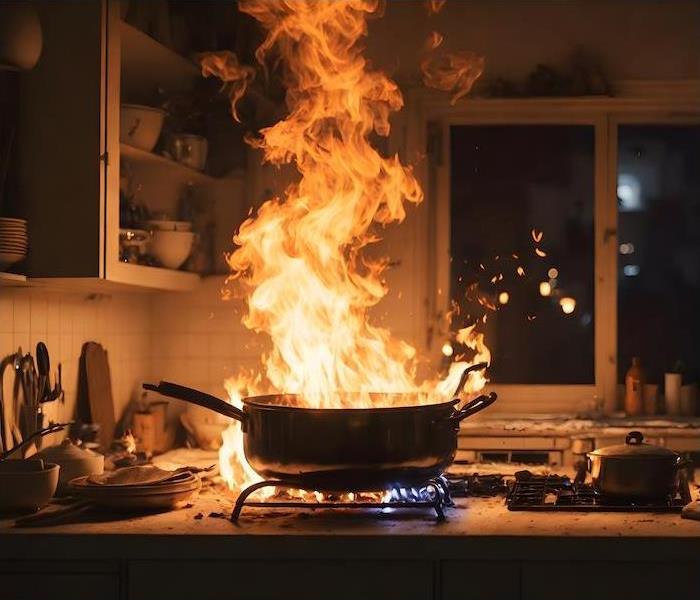 Fire damage in your home? Not for long with SERVPRO of Harlingen/San Benito on the case!
Fire damage in your home? Not for long with SERVPRO of Harlingen/San Benito on the case!
The holiday season has finally arrived again. Whatever your favorite way to celebrate during this time of year is, it probably involves some good food. Whether you are the cook or Grandma doesn’t allow anyone else in the kitchen, it is important to cook with as much safety as possible.
The number of home fires goes up every year during the holidays, and a good number of them start in the kitchen. The good news is that you can keep Grandma and everyone else safe by taking a few proactive steps that will protect the whole house.
Reducing Flammable Materials in the KitchenBefore you ever turn you stove on, do a little bit of fire safety prep work to get your space ready. Many kitchen fires happen because a flammable item was left near a heat source.
Pay special attention to pot holders, towels and oven mitts. Wooden utensils, although a popular cooking tool, are also a risk when it comes to flames. A single pop of oil or a spark that leaps out could catch anything close by on fire.
Consider your clothing as well. Skip dressing up in the fun apron or goofy sweater until after the cooking is finished. Loose fabric, hanging strings or dangling decorations all present a fire risk you should avoid.
Keep a Close Eye on FoodWhen you cook, it is always a good rule to stay close by until everything has cooled down. Kitchen fires can start quickly in a number of ways. Whether you are cooking in the oven, on the stove or even in a countertop appliance, you will need to move fast to prevent a total disaster should something spark a flame.
If frying a turkey is part of your plans, you will need to take a few extra steps to stay safe. Don’t overfill your fryer, and take the time to read the safety guidelines from the manufacturer.
Put it on a level spot away from flammable materials, and make sure your turkey is totally thawed. A partially thawed turkey can make the oil pop and splatter, creating burn and fire risks.
Install Protective MeasuresFires may not be totally avoidable, but the more you do to stay safe the lower your risks will be. Make sure your home has enough protective equipment in place, including smoke detectors on every level of your home. Check them monthly, but make it a point to check the one in or near your kitchen before you head in to cook the holiday meal to ensure it is working properly.
Invest in a small fire extinguisher and store it close to the kitchen as well. Make sure a few family members understand how and when to use it. Get your pot lids out and keep them within arm’s reach to quickly smother grease fires.
Make your holiday season truly one to remember by avoiding disasters and keeping everyone safe. If you do suffer any size fire in your home, call us the moment the flames are out. We can respond quickly to handle your restoration needs so you can get back to celebrating.
House fires can happen in the blink of an eye. Contact us for a quick restoration day or night!
Cooking the Burgers and Staying Fire-Safe | SERVPRO of Harlingen/San Benito
9/19/2023 (Permalink)
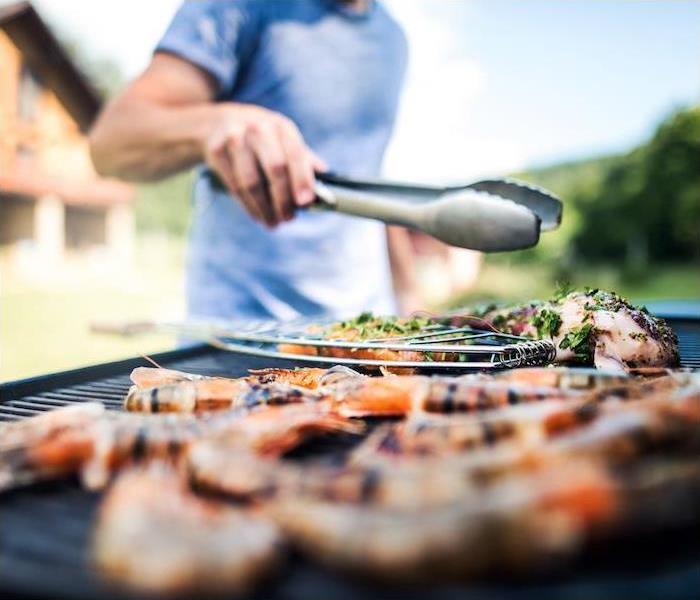 Have you had a barbeque gone wrong? Call SERVPRO of Harlingen/San Benito to get your space back in shape.
Have you had a barbeque gone wrong? Call SERVPRO of Harlingen/San Benito to get your space back in shape.
Summer has finally rolled around again, and it is time to get outdoors and spend your days with the ones you love the most. Texas summers might get hot, but it is also the best time to break out the grill and cook endless amounts of burgers.
Did you know that grills, when used improperly, are one of the leading causes of house fires in the summer? We may all love cooking over an open flame, but it can turn dangerous in a matter of seconds. SERVPRO of Harlingen/San Benito wants to ensure that you are able to enjoy all the grilling you heart desires—without the worry of fire.
The SetupAs you dust the winter grime off of your grill, think about where you are going to place it. Grills should be in an area that is open and clear of overhangs and combustible materials. Harlingen weather can get rainy over the summer, but you still shouldn’t move the grill to the garage. The heat and flames can quickly toast and damage anything above them.
When you find a spot that is open, make sure it is also at least 10 feet from any structures. This 10-foot barrier should also be a kid- and pet-free zone, so make sure everyone in the family understands to keep back while you are cooking.
Charcoal grills should be cleaned every time they are used. Ash and any other buildup should be removed, and the body of the grill needs to be inspected for signs of wear and tear. Spend time inspecting your propane grill as well. Make sure connections are tight and look for holes in the gas line.
Manning the FlamesEven after you have inspected everything on the grill, take a look at your supplies before firing anything up. Make sure you have a squirt bottle handy to extinguish any flames that grow too tall, and put a garden hose or fire extinguisher somewhere you can quickly access it if things do get out of control.
While you certainly deserve some applause for your hard work, let someone else take the food once it is cooked while you shut everything down. Turn off the gas and any burners you might have been using. If charcoal is your primary source of fuel, close any vents in order to cut the oxygen supply and start the cooling process.
Remove ashes as quickly as you can safely do so, disposing of them in a metal can. These can easily catch flame again, so it’s best to remove them from the source of heat. Check your grill before you call it a day and ensure it has properly cooled down.
San Benito brings some beautiful summer weather. You deserve to enjoy every moment of it without fear of a disaster striking. Take the time to grill safely, and keep SERVPRO of Harlingen/San Benito’s number in your contact list. We can respond 24⁄7 when flames do get out of hand to get your home put back together quickly.
Don’t let fire damage linger in your home. Call us at SERVPRO of Harlingen/San Benito for a fast restoration.
Safety When You Have Fire Outside | SERVPRO of Harlingen/San Benito
9/19/2023 (Permalink)
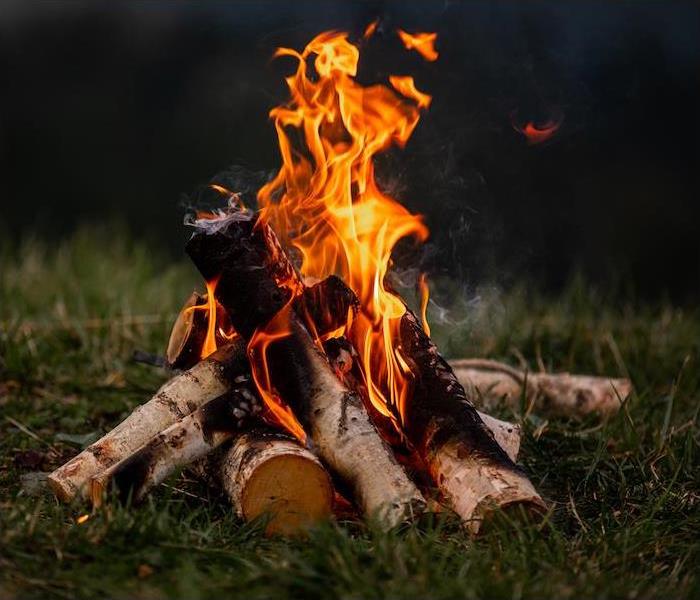 Bonfire season is upon us! SERVPRO of Harlingen/San Benito has your back with these helpful fire safety tips.
Bonfire season is upon us! SERVPRO of Harlingen/San Benito has your back with these helpful fire safety tips.
The weather may still be pretty stifling hot most days, but you might have started to notice a cool breeze in the air and some lower temps at night. Fall is almost here, and while our weather only gets a little cooler, the break from the humidity and the more tolerable nights, combined with pumpkin everything, still make fall a great time of year.
Fall is also when a lot of us gather up our kiddos and head outside to roast marshmallows and share sweet memories around a campfire. While you are overindulging on sticky sugar, make sure you are also practicing fire safety to keep your property protected.
At SERVPRO®, it is our goal not just to restore your home fast when disaster strikes, but to also help you stay as safe as possible and avoid damage whenever you are able.
Tips for Starting the FireWhen you head outside to start a fire for the family, keep a few of these things you should do in mind:
Do find the safest spot possible to either place your fire pit or start your campfire. Choose a space that is free of overhangs, loose limbs and other debris as well as plenty far away from any structures.
Do keep water for emergency use nearby. A bucket full of water or a garden hose you can quickly turn on can stop flames that are headed in the wrong direction before a problem really starts. Sand and dirt can also snuff out flames and can also be helpful for putting out embers.
Do take a look at what the weather is doing the day you intend to have a fire. Check the forecast and keep an eye on the wind. Even a fire pit that has a screen is not safe to use when winds are high. Take a look at any potential burn bans for the area before lighting your fire, and be sure to follow any regulations in place.
Tips for While the Fire Is HotOnce your fire is going, keep in mind a few things not to do:
Don’t use anything to start or keep your fire going other than approved firewood. Lighter fluid and gas can be extremely dangerous on an open flame, and tossing in trash or other items can result in higher and hotter flames than you can handle.
Don’t let anyone play around the fire. Make sure kids don’t run or walk near the flames, and keep any yard games or balls a safe distance away as well.
Don’t make a bigger fire than your fire pit can handle. It can be tempting to build the fire big from the start so that you have to tend to it less, but it only takes a single flame getting away from you to start an entire backyard fire.
Don’t leave your fire unattended. Even when you are done for the night and the flames are mostly out, you need to add water to the remaining wood and embers. Red hot embers can catch back on fire even hours later.
Wildfire PreventionYou should be fire-aware because the majority of wildfires are started by humans. If you are going to have a flame outside, do everything in your power to protect your home and your environment. Keep it small, use the right materials, and never walk away.
SERVPRO is always here. If your property is damaged by fire, smoke or soot, you can call us day or night and start your recovery fast. We will restore your property completely so you can get back to all things pumpkin.
Fire can cause a lot of damage in a short amount of time. Contact us day or night for immediate assistance.
Not-So-Scary Fire Safety for the Whole Family | SERVPRO® of Harlingen/San Benito
6/14/2023 (Permalink)
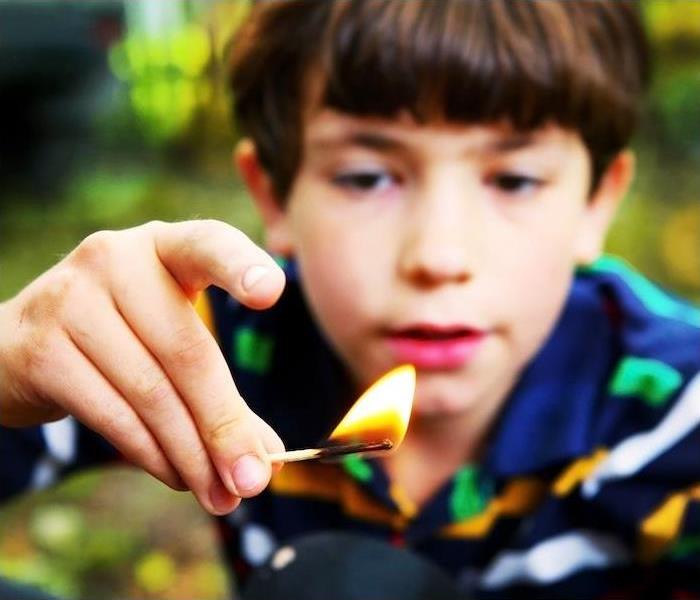 SERVPRO of Harlingen/San Benito is here for you and your family if you experience a fire in your home or business.
SERVPRO of Harlingen/San Benito is here for you and your family if you experience a fire in your home or business.
There is nothing more rewarding than raising children, and perhaps nothing quite so hard either. You have so many responsibilities in your day-to-day, including fostering their creativity and sparking their curiosity. There are so many things to teach them, but some of the realities they have to be prepared for can be pretty scary.
Learning how to stay safe at home from all disasters is crucial, but fire safety can be a frightening concept to try and help your children grasp. If a fire happens, it will be scary, no matter how old you are.
If you introduce safety measures early and review them often, you can help ensure that your child responds appropriately in the event of an emergency.
Explain the Dangers of FireKids learn best in a comfortable atmosphere where they can experience concepts more hands-on, especially when they can see cause and effect. Start fire safety education by explaining to your children how fires start, and walk them to some of the areas in your home with the greatest risk. Let them touch the stove while it is turned off, and look at the fire pit in the yard. Make sure they understand the seriousness of these tools and how to stay safe.
If you keep matches or lighters in your home, they should be out of reach of young children—and older children should be taught how to use them safely.
Make sure everyone in your home knows that if a match is found in the wrong place it should be properly disposed of. Your entire home can be engulfed in flames from a single, smoldering match.
Familiarize Them With AuthorityA firefighter in full gear can be an alarming site for little ones, so take the time to get them comfortable around authority figures. Explain to them who would respond in an emergency and show them what they will look like. Take them by the local police station or fire station so they can experience these heroes and their equipment in person.
Start practicing with your children how they should respond in a fire by turning on your smoke alarm and having them crawl down a hallway while calling out their name. Turn it into a competition to see who can get down the hall fastest. Pretend to be a firefighter and play a modified game of hide and seek so your children can understand that the main goal of an emergency responder is to get them to safety.
Make a Game Plan TogetherIf you don’t already have one, sit down with your family and create an exit plan. Get the art supplies out and let the kids create their own maps of your home.
Time the kids exiting each room to determine the fastest path. Make creating your plan a fun experience and there is a better chance your kids will remember exactly what to do.
Talk about using windows as a last resort exit only, and make sure your children understand the danger involved in this. Windows are not something you want your children playing with, but you do want to practice how to unlock and climb out in the event of an emergency.
As part of your escape plan, create a meeting place far enough away from danger that everyone can easily get to. Play tag with the kids and make this home base so they can get comfortable with it. Teach your kids how to call 911, and help them memorize basic facts about themselves, their parents and their location. Everything you can do now will mean a better outcome later.
Fires can cause widespread damage. Call us for a thorough and efficient restoration.
Fire Damage
5/2/2022 (Permalink)
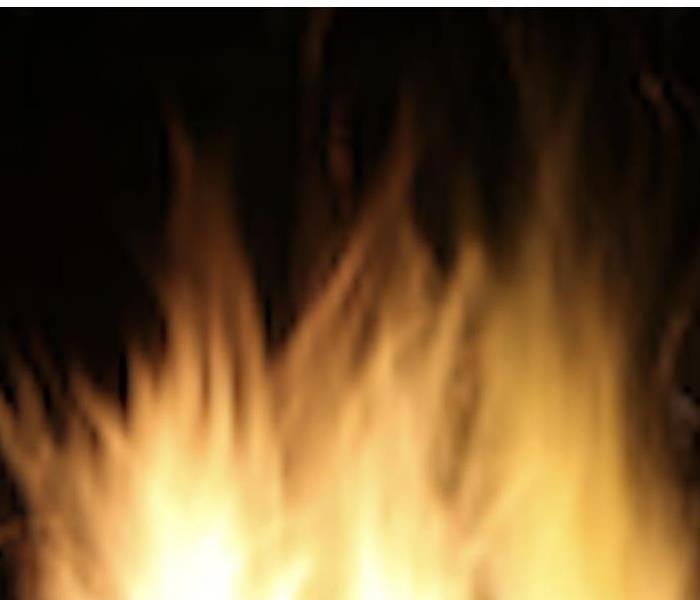 A Fire
A Fire
Fire DamageEvery 23 seconds, a fire department in the United States is responding to a fire, and these caused around $8.1 billion in direct property damage and losses nationwide in 2020.
Experiencing a fire is a frightening thing, but we are here to immediately jump into action. Our seven-step restoration process is designed to get you help quickly.
We begin with an inspection and damage assessment, then progress through all the necessary restoration steps before beginning repair and construction
SERVPRO is always here when you need us—you can get in touch using our 24⁄7 Emergency Line for immediate assistance with your damage.
Regardless of the type of damage sustained, SERVPRO has the tools and teams to help your home or business recover from its disastrous effects. Contact us anytime when you need a dependable team to help you rebuild your life.
Fire Prevention
4/23/2022 (Permalink)
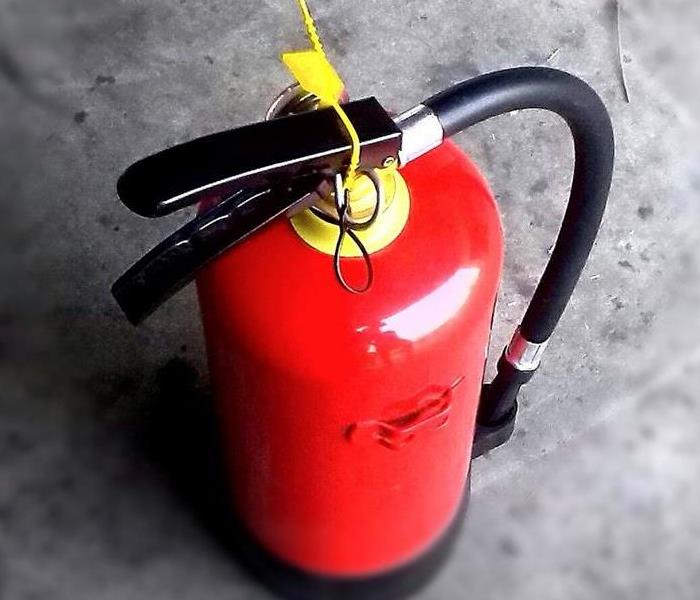 Always keep a fire extinguisher on hand.
Always keep a fire extinguisher on hand.
SERVPRO of Harlingen and San Benito are licensed and trained to handle any situation that their clients have found themselves in. Rather than look for blame, SERVPRO looks for how to help their clients never run into these citations again. As the moto says, we make it as though it never even happened. One of the situations that SERVPRO handles are fire damages. Fires can start very easily, but their also easy to prevent. One of the things that is always recommended is to check your smoke and fire alarms. Often times people forget about them since their not very visible, or have never been in a risky situation. However, it is important to do monthly checks on these systems, as well as keeping a fire extinguisher on hand. Keep items that can cath on fire at least three feet away from items such as candles or heaters. Speaking of heaters, make sure that they are clean and that the filters have been changed. That goes for laundry machines as well. Lastly teach your loved ones about fire prevention and how sounds of fire/smoke alarms sound. Remember to keep an exit strategy in mind for your home.
SERVPRO Restoration Experts Are a Team You Can Trust | SERVPRO® of Harlingen/San Benito
4/21/2022 (Permalink)
 No matter the damage sustained, SERVPRO of Harlingen/San Benito has the tools and team to help your home return to a normal state quickly.
No matter the damage sustained, SERVPRO of Harlingen/San Benito has the tools and team to help your home return to a normal state quickly.
At SERVPRO, we offer more than general restoration, construction and cleanup. When the worst natural or manmade disasters strike, we are the team you can trust to respond quickly and effectively.
From hurricane damage to flooding to fires, we have helped countless families in Harlingen recover from damages to their home or business—and we are here 24⁄7 to help you, too.
Water Damage
Floods lead to over $10 billion in damages throughout the country every year, and because floods can occur anywhere and at any time, it is important to have a plan in place for how to handle them.
Flooding is something that many home or business owners will face at some point, but know that SERVPRO is here to help. We have the tools to detect hidden moisture and extract standing water, and we will make sure you understand the severity of the damage so you can take the proper steps toward restoration.
Plus, we will create a full restoration plan so you can be certain your home will be clean, dry and restored to its preloss status.
Do you know what a fire hazard looks like?
3/22/2022 (Permalink)
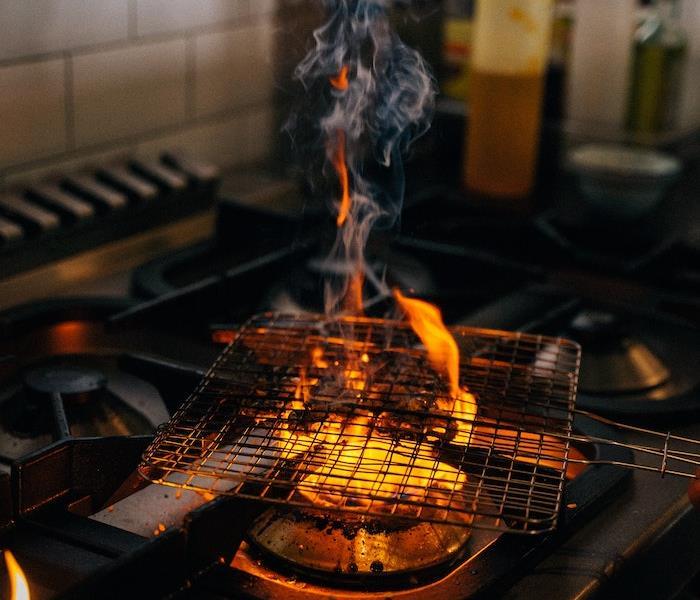 Stoves can be fire hazards.
Stoves can be fire hazards.
House fires can be very devastating, especially when you realize that it may have been completely preventable. The first thing we recommend to our community is to be aware of how fires can start and spread.
According to the National Fire Protection Association, the leading cause of fire is rooted from appliances and equipment, such as heaters or clothing dryers.
Do you remove the lent from your dryer periodically? Do you keep your heaters away from combustable materials, like bed sheets or curtains? Do you ensure your laptop or desktop computers are not overheated? Do you dust them periodically?
It is important to look around your house or a room in your house and look for these hazards. These practices can help you and your family prevent a house fire.
If you need any tips or have any questions, contact us at SERVPRO of Harlingen/San Benito.
Do you know about Soot?
3/22/2022 (Permalink)
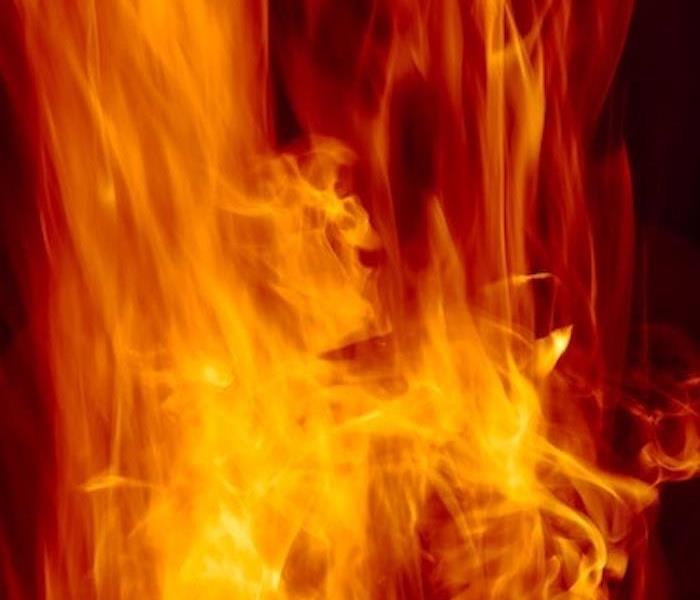 Soot results from fire.
Soot results from fire.
Soot is the resulting product of a fire when it does not completely burn its fuel source. You may have seen it before; it is black and powdery.
When soot ionizes, it sticks to difference sources, such as walls, floors, and furniture. It also makes its way into your home or businesses's heating and air conditioning system, which can cause your home or business to have poor air quality and ventilation. This exposure, whether it be through your mouth, eyes, or even skin, can be dangerous to your health since soot is composed of toxic chemicals.
Instead of taking this risk, contact our team of highly trained technicians at SERVPRO of Harlingen/San Benito! We the appropriate protective equipment, technical practices, and technology to safely clean and restore your home or business after a fire.
Fire Safety: Candles
2/8/2022 (Permalink)
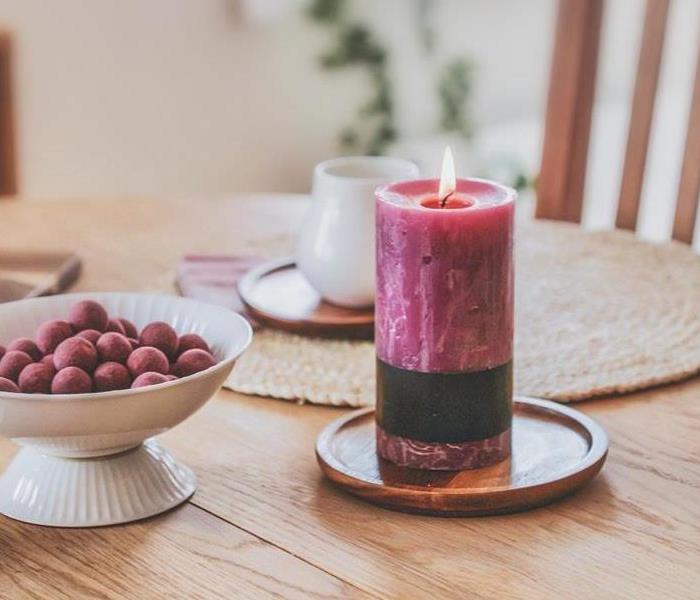 Candle
Candle
SERVPRO of Harlingen and San Benito wants to reassure you that fire damage is not the end of your world. We can make It as though it never even happened. However, how do we make sure it never even happens? There are a few ways to prevent fires that we may not even think about. Candles are a home favorite accent. The warm light and sweet smell bring everyone comfort, but did you know that trimming the stem in your candles can actually prevent a large flame and make them last longer. Candles should be placed away from flammable objects but also away from table/shelf corners to prevent them from falling over. If you have a child or a pet it’s very easy to knock over objects, so it’s better to keep them from edges. If you love candles, but don’t want to deal with an actual flame, there's an alternative called a lamp warmer. A light bulb will melt your candle keeping that warm light and smell around the house with no fire risk.
More Than A Building
2/8/2022 (Permalink)
- SERVPRO of Harlingen and San Benito has been repairing fire damages since they opened in 2015. With so much experience not only have we built up unity as workers but we have a better understanding of our clients every step of the way. We understand that every case is different and that for our clients it’s not just a building. This building can be a business that took years in the making. It could be a safe place for a family to call home. We understand the difficulty in losing something you rely on and that's why we take extra care of not only damage within your special place, but of you. Our clients are our family, and it means so much to us to take care of you and to explain everything that’s going on with your special place.
Why is it important to leave fire restoration to SERVPRO?
4/16/2021 (Permalink)
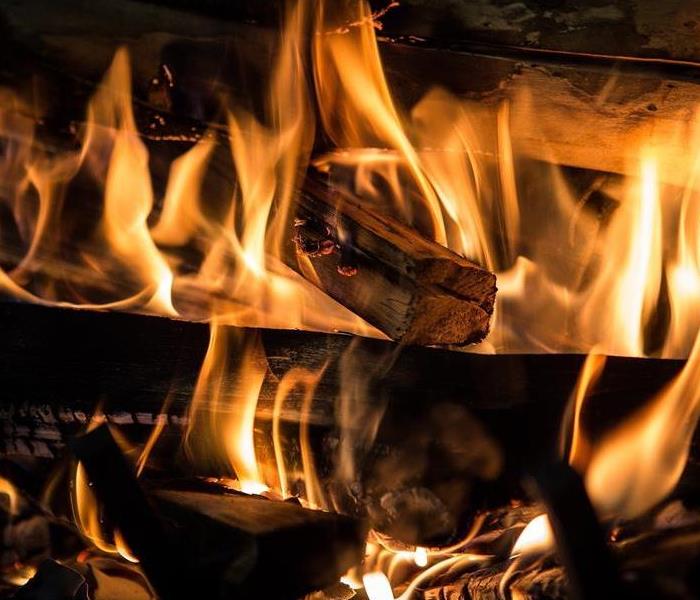 Before and After
Before and After
We understand how traumatic it is to lose your home or business to a fire. We have helped numerous families and small businesses restore the homes and businesses that they have invested their whole lives building. In order to make this process easier for you and more efficient, we have a few tips for you to follow. First off, the faster you contact our team, the better the results will be. As we all know, fire leaves behind ash and soot that can cause permanent damage if left unaddressed. Over just a couple of hours, your building structure can be affected by corrosion, discoloration, and even diffusion of odor. By contacting us sooner, you can prevent the damage from becoming much more extensive. Our technicians are specifically trained in fire restoration, so leave your worries to us!
How to prevent stove fires?
4/16/2021 (Permalink)
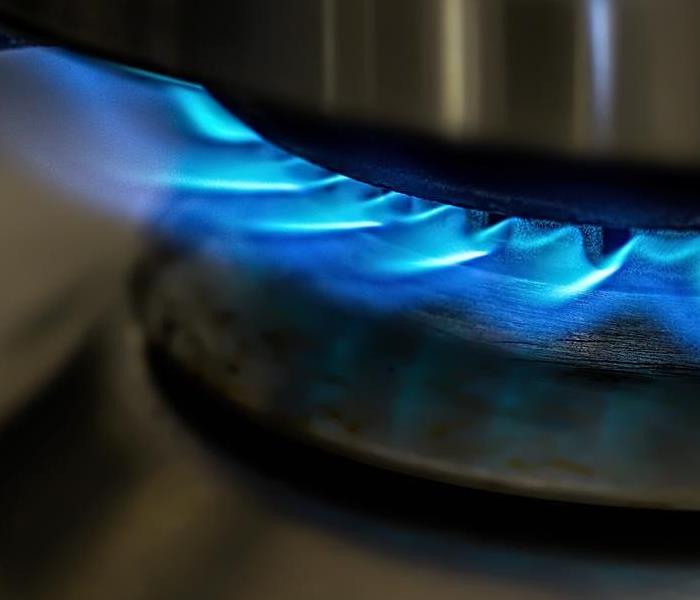 A lit stove.
A lit stove.
Did you know that the leading cause of fire are cooking-related fires? The kinds of fires also cause the most injuries. They can be such a terrible and unexpected surprise when your intentions are only to cook something delicious for your family. There are a few things you can do to prevent them! Firstly, it may seem logical to put these fires out with water, but this will only spread the fire further. The water reaches the bottom of the pan and becomes steam, which then propels the flames into the air and can cause you to be burned. In order to prevent these fires from starting, you should be sure your cooking equipment is not defective. You should also ensure that there is nothing combustible near your cooking area. Also monitor the flame, especially if you are cooking with oil. These easy tips can be very helpful and keep your family or employees safe!
Non Restorable
3/15/2021 (Permalink)
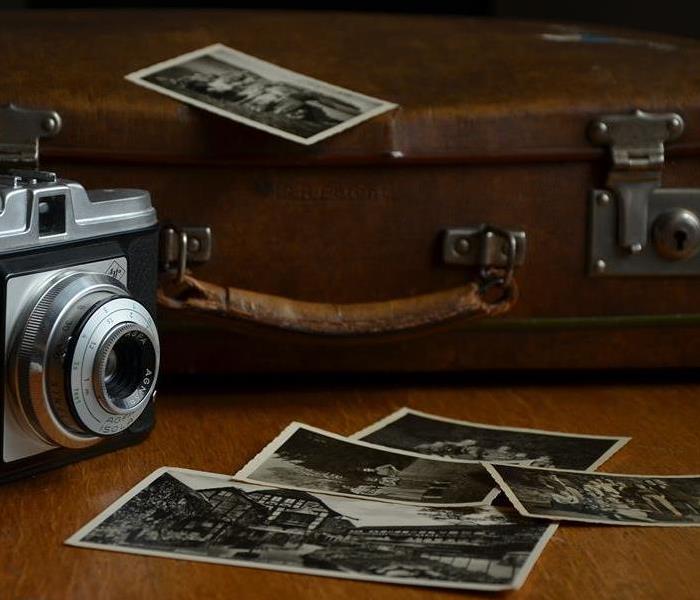 Photos
Photos
After experiencing a fire damage the repair may seem unreachable. SERVPRO understands that a lot makes a home, the memories you hold there are irreplaceable. Not only that but the cost to restore belongings can be a heavy burden. That’s why here at SERVPRO our team wants to make sure that your belongings can be restored, and are safe to take home. SERVPRO undergoes these methods for restoring items: Dry Cleaning, Wet Cleaning, Spray and Wipe, Foam Cleaning, Abrasive Cleaning, Immersion Cleaning. When it comes to your photos or documents we can’t make them the exact condition as before the fire, but we can restore them so that no further damage can occur. Depending on the level of fire, soot, and smoke SERVPRO has multiple options to restore the documents:Air Drying, Dehumidification, Freezer Drying, Vacuum Freeze, Drying Vacuum, Thermal Drying.
Emergency resources Caution
3/15/2021 (Permalink)
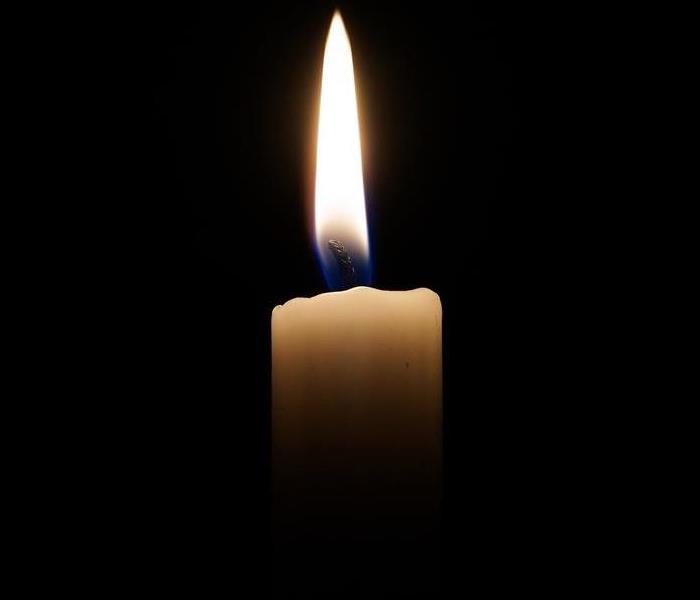 Candle
Candle
Which resources do you rely on during a power outage? Do you use candles to light your home? While it may be your only alternative, it is important to aware that candles can also cause your home to catch on fire and endanger your loved ones. Here are some tips that can help when the time comes:
- If you are doing to use a candle, do not leave it unattended.
- Do not leave burning candles within reach of children.
- Lighting a candle is not an option if you smell gas in your home.
- Place candles on fire-resistant surfaces, such as concrete or fire-rated glass.
- Remember that candles are a fire hazard and you should use battery operated flashlights and other similar light sources.
Christmas Fire Safety
12/11/2020 (Permalink)
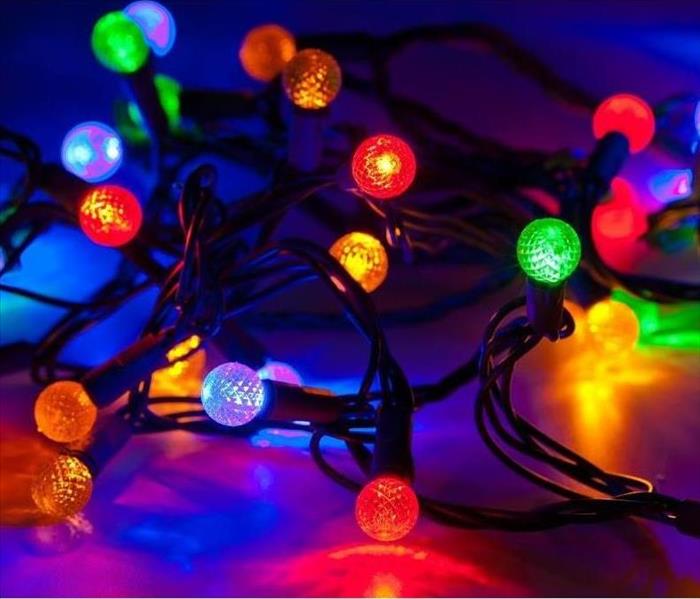 Christmas Fire Safety
Christmas Fire Safety
The Christmas holiday season is a time of year that we should be spending with family and spreading joy to all of our loved ones. During this time of year it may be easy to overlook some of the fire hazards that come along with the decorations of the season.
The NFPA. estimates an average of 230 American homes are damaged each year by fires caused by ignited Christmas trees. Another 150 home structure fires are caused by line voltage decorative lights. Together these fires cause an average of 15 deaths, 38 injuries and $26.7 million dollars in property damage each year! These sobering figures cannot be ignored and safety precautions need to be taken to help ensure you and your loved ones have a safe and enjoyable holiday season without the fire alarm going off.
Here are some great tips we would like to pass your way to help you keep your holiday fire free.
- When choosing a tree be sure to pick one that is a fresh as possible. Look to see your tree has green, semi-pliable needles. Dry needles have a much higher possibility of catching fire. Cutting down the tree yourself is the best way to ensure its freshness.
- If you have an artificial tree be sure it is labeled Fire Retardant by the manufacturer. While having a real tree might bring a sense of holiday authenticity, the simple fact of the matter is that artificial trees are much less likely to catch fire.
- Before putting your real tree in a stand be sure to cut off at least 2 to 3 inches of the base to expose some fresh wood. This will allow the tree to stay moist and prevent drying gout. Be sure to check the water level of the tree every day. A real Christmas tree will be very thirsty in the dry winter months.
- Choose where you place your tree wisely. Never place your tree near any heat source like a fireplace, radiator, heating vents, hot water heater, hot lights or candles. And of course never place your tree in front of any exit. In case of a fire you want to make sure you have a clear path to get out of the house. Another suggestion is to place your tree somewhere that the tree cannot be knocked over by the family pet or playing children into a heat source.
- When choosing lights for your tree and extension cords be sure that they are rated properly by an independent testing laboratory and are UL-listed. Some lights are intended for indoor or outdoor use only. Today’s LED lights are a great choice as they do not create any heat. We hope it should go without saying, but never use real candles to light up your tree. This is an old tradition before electric lights were invented and we highly suggest you do not attempt this.
- Once you have your new lights selected or have pulled out the lights from storage, be sure to check them well for any loose bulbs or damaged wires. If you can replace the bulbs be sure to unplug them before doing so to avoid any shock. If the wires or plugs are defective, replace the entire string. Don’t risk a fire due to an electrical issue as this is the number one reason trees ignite.
- When you are ready to plug in your lights, be sure not to overload any one circuit. Plug a maximum of 3 light strings together. If you are using LED lights, consult the manufacturer’s suggestion on how many strings you can safely plug into each other to create one chain. It is highly suggested that you plug all lights into a surge outlet protector instead of directly into a wall outlet. Lastly, always remember to shut off the lights before going to bed or leaving the house.
- If you will be decorating the outside of your home than be sure to choose lights that are intended for outdoor use. Using indoor lights that are not designed to be used for outside weather can result in them shorting out or even worse. Don’t run the risk of electrical shock or a fire hazard by using indoor lights outside. If you are unsure if your lights are safe for outdoor use than look for the color-coded UL logo on the packaging. A green logo is only safe for indoor use while the red logo can be used inside or outdoors safely. The same safety precautions need to be taken with any extension cords that are being used.
- Once the festivities are over and the holiday has come and gone you are better off taking the tree down as soon as possible. Real trees do not last that long and the needles will quickly begin to dry out making them a fire hazard. The majority of fires involving Christmas trees happen after the holiday and not before. It is also suggested that you remove outdoor lighting immediately after the holiday to reduce any risk of fire and to help preserve the life of your outdoor lights.
Christmas Tree Safety Checklist
12/11/2020 (Permalink)
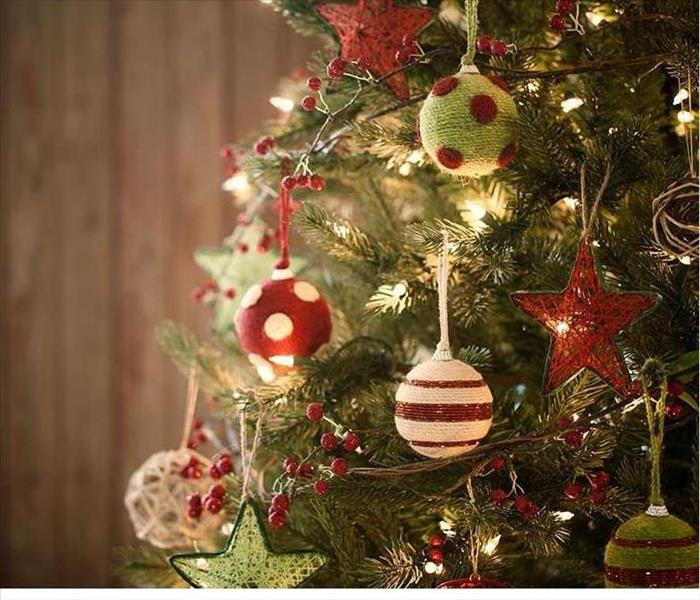 Christmas Tree Safety Checklist
Christmas Tree Safety Checklist
My Christmas Fire Safety Checklist
1. Fire Safety for Artificial Trees?
This appears to be the safest choice, as long as it’s UL-listed. Artificial trees can still catch fire, especially if candles are involved, so look for one that is “flame resistant” or “flame retardant.”
2. Fire Safety for a Fresh Tree?
The fresher, the safer. It’s got more natural moisture that way. So check out the needles… if they snap or fall off easily, the tree is too dry. When you get it home, cut 2 inches off the bottom of the trunk and place it in the tree stand with plenty of water. It’ll need about a gallon of water every couple of days, but it will probably need extra water in the first day or two. Studies show that a dry tree is likely to catch fire unintentionally, but one that is kept watered is very unlikely to do so.
3. Where You Place Your Tree Matters
For optimal fire safety, place your tree strategically away from heat sources like candles, space heaters, vents, radiators and fire places — and don’t block stairways or exits! (PSST – And don’t forget about candle safety! Candles are apparently a major culprit around the holidays.)
4. What about Christmas Tree Lights?
Again, UL-listed is the way to go. That’s the independent testing organization that makes sure lights are safe. Look for the label!
Be sure to pay attention to whether your lights are for indoor or outdoor use. (It matters.)
LED lights rock. They don’t get as hot, and the plastic casing is less likely to break than a glass bulb. They last longer and are more energy efficient, too!
5. Check Your Decor for Damage.
Electrical problems cause about 1/3 of Christmas tree fires. So check last year’s decor for damage — a squirrel in the attic eating through the wire, for example. Outdoor lights might wear out more quickly from season to season, so check for damage there, too…. loose bulb sockets, damaged wires or plugs. Those are a no-no.
6. Don’t Overload Your Sockets!
Many manufacturers will tell you how many lights you can string together, but a good rule of thumb is a maximum of 3 strands. So don’t overload a socket or extension cord, even if you use a surge protector.
7. Turn Your Lights Off When Unattended.
That means before leaving the house or going to bed. You don’t want lights left on to cause a problem when you’re not around to act fast. And if you use a remote switch or foot switch, they can be less of a hassle to turn off. Bonus!
8. Dispose of Your Live Tree Soon!
Now hear this: After Christmas is over, have a good cry and then recycle your live tree soon. This was the most surprising thing I found: A 2013 report from the National Fire Protection Association shows that HALF of Christmas tree fires occur in the 20 days AFTER Christmas. Even a well-watered tree should be taken down after 4 weeks, according to the NFPA. So if you put your life tree up right after Thanksgiving, take it down right after Christmas… not on New Year’s Day.
It also goes worth saying that about 20% of these after-Christmas fires were set intentionally, as a method of disposing the tree… but then the fire spread to the house. So dispose of the tree properly — recycle it! — when its needles are falling off. Don’t go into post-Christmas denial!
While we’re on the topic of un-decorating (Is that a word? It is now.), removing your outdoor lights sooner will help them last longer and stay usable next season! Hit the after-Christmas sales to replace your worn-out decorations for a fraction of the price. And who doesn’t love a good deal?
Safety First Before the Feast
11/10/2020 (Permalink)
 Safety First
Safety First
Each November, families gather to celebrate Thanksgiving by preparing a delicious feast, but if you don't practice safe cooking habits, your happy holiday could quickly become hazardous in a blink of an eye. According to NEPA cooking in the main cause of home fires and injuries with the Thanksgiving holidays being the peak day for cooking related fire. Review the following safety tips to help ensure you can enjoy a safe holiday.
- Never leave cooking food unattended
- Check food regularly while cooking and remain in the home while kitchen equipment is in use.
- Keep small children away from cooking area. Enforce a kid free zone.
- Keep anything flammable away from the stove, oven, or other appliances in the kitchen that generates heat.
- Do not wear loose clothing or dangling sleeves while cooking.
- Purchase a fire extinguisher to keep in the kitchen year round.
- Install a smoke alarm near the kitchen, on each level of the home, near sleeping areas, and inside and outside of bedrooms.
SERVPRO Of Harlingen & San Benito wish you a safe and happy Thanksgiving and holiday season.
Choosing the Appropriate Fire Extinguisher
11/10/2020 (Permalink)
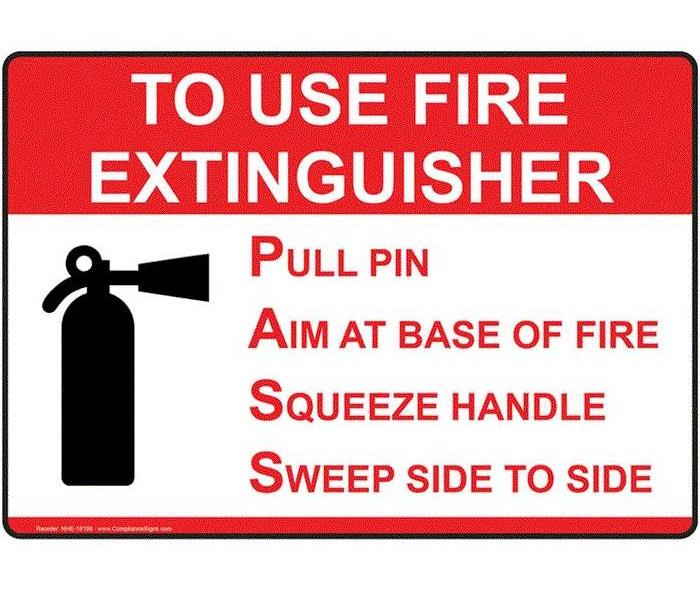 Choosing the Appropriate Fire Extinguisher
Choosing the Appropriate Fire Extinguisher
- Class A: This is the most common extinguisher and can be used to put out fires in ordinary combustibles such as cloth, wood, rubber, paper, and many plastics.
- Class B: Use on fires involving flammable liquids, such as grease, gasoline, and oil.
- Class C: Designed for fires involving appliances, tools, or other equipment electronically energized or plugged in.
- Class D: For use on flammable metals; often specific for type of metal in question. These are typically found in factories.
- Class K: Intended for use on fires that involve vegetable oils, animal oils, or fats in cooking appliances. Generally found in commercial kitchens.
For more info feel free to call us SERVPRO Of Harlingen & San Benito at 956-277-0645
Fire Precautions During this Holiday Season
11/10/2020 (Permalink)
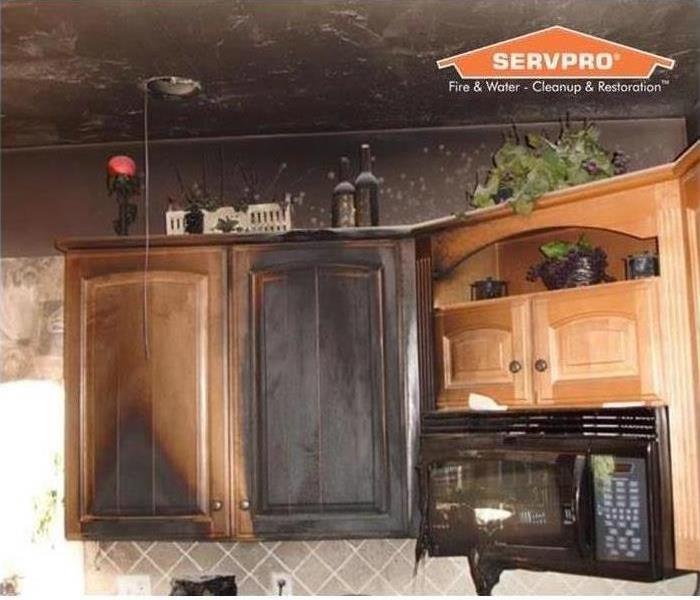 Fire Precautions During this Holiday Season
Fire Precautions During this Holiday Season
Did you know cooking equipment is the leading cause of residential fires? As the holiday season begins and you find yourself in the kitchen more often while hosting friends and family, fire precautions should be top of mind.
A property owner experiences a flood of emotions when a fire ravages their business or home. Fear, uncertainty, stress, and doubt about the future of the property and their livelihood can be overwhelming to the property owner long after the flames have been extinguished and the smoke has clear. After the first wave of heroes have rescued the property, let SERVPRO Of Harlingen & San Benito help you restore it to its preloss condition. Combining rapid response, the utmost professionalism, and open communication throughout the entire job process, we strive to restore not only the home or business structure, but the customer's peace of mind as well.
The National Fire Protection Association (NFPA) offers the following eye-opening statistics on structure fires: more then one quarter of reported fires occurred in homes within the last year. Even worse 79% of fire related deaths were caused by home fires. On average, U.S. fire department respond to an estimated average of 354,400 home structure fires per year resulting in $6.9 billion in direct property damage. Most home fires and fire casualties result from five causes: cooking, heating, electrical distribution and lighting equipment, intentional fire setting, and smoking materials.
If the unthinkable happens and a fire strikes your home or business, give the expert at SERVPRO Of Harlingen & San Benito a call at 956-277-0645. We will help make it "Like it never even happened."
Summer fire tips
6/5/2020 (Permalink)
 Fire Tips
Fire Tips
Summer is a time to enjoy the great outdoors, but it is also important to keep safety in mind. Consider the following tips, provided by the National Fire Protection Association, to keep your family safe all summer long.
When using a charcoal grill, only use starter fluids designed for barbeque grills; DO NOT use gas, diesel or any other types of flammable fluids.
When using a gas grill, ensure the hose connection is tight and check the hoses for leaks. Applying soapy water to the hoses will easily and safely reveal any leaks.
When camping, always use a flame retardant tent and set up camp far away from the camp fire.
Always build a campfire downwind from the tent area. Clear vegetation and dig a pit before building your fire. Always extinguish the fire before going to sleep or leaving the campsite.
Store liquid fire starter (not gasoline) away from your tent and campfire. Only use dry kindling to freshen a campfire.
Here at SERVPRO Of Harlingen & San Benito we hope you are a happy and safe summer!
Five Safety Tips To Prevent A Dryer Fire
6/5/2020 (Permalink)
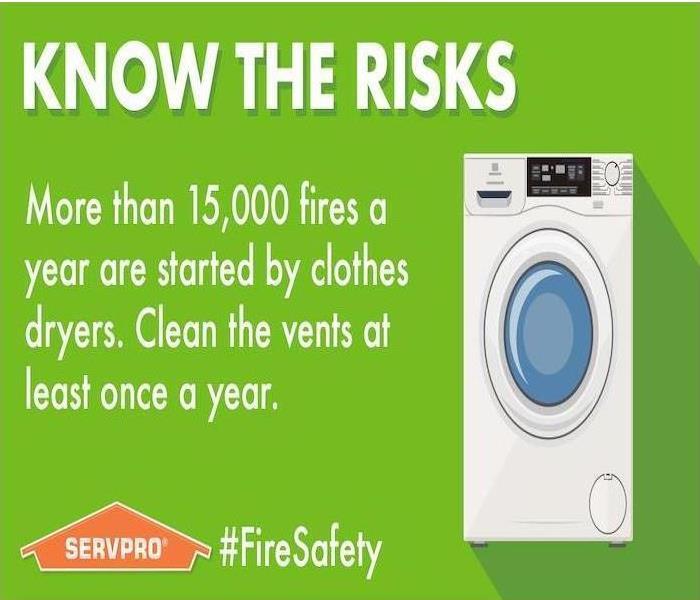 Prevent Clothing Dryer Fire.
Prevent Clothing Dryer Fire.
A clothes dryer is common and convenient household appliance, but it can be dangerous if not properly maintained. Not only can the dryer break and need replacing, but it can also cause a lint fire. Follow these safety tips to help prevent any emergency situations.
1. Have your dryer professionally installed
Having your dryer installed by a qualified professional can put you on the right path to keeping your home safe. They can make sure that everything is installed correctly and working as it should, preventing any potential safety hazards.
2. Clean the lint filter and dryer vent regularly
The most common cause of dryer fire is not keeping the unit clean. You should remove lint from the filter before and after each use . Lint can also build up in the back of the dryer, so be sure to clean that area as well. The dryer vents should be cleaned at least every three months to prevent blockages.
3. Have the Dryer serviced regularly
It is a good idea to have your dryer serviced on a regular basis. Hiring a professional to clean and inspect the appliance at least once a year can help minimize any problems and keep the unit safe to use.
4. Keep Flammable items away from the dryer
A lint fire is not the only kind of fire that can occur when using your dryer. If a flammable liquid has been spilled on an item, you should never put it in the dryer. Be sure to keep any flammable materials away from the surrounding areas as well.
5. Make sure the dryer is off before you leave the house
If you are leaving your home or going to sleep , make sure that you turn the dryer off beforehand. If a fire were to start while the unit was unattended, it could spread and cause a lot of damage before you were aware of it.
Here at SERVPRO Harlingen & San Benito we are fire remediation specialists to help you in case of a lint fire, but keeping your dryer cleaned and properly maintained can help keep you and your unit safe.
Call us at (956)277-0645 or visit our website at https://www.SERVPROharlingensanbenito.com/
Fire Extinguishers
4/22/2020 (Permalink)
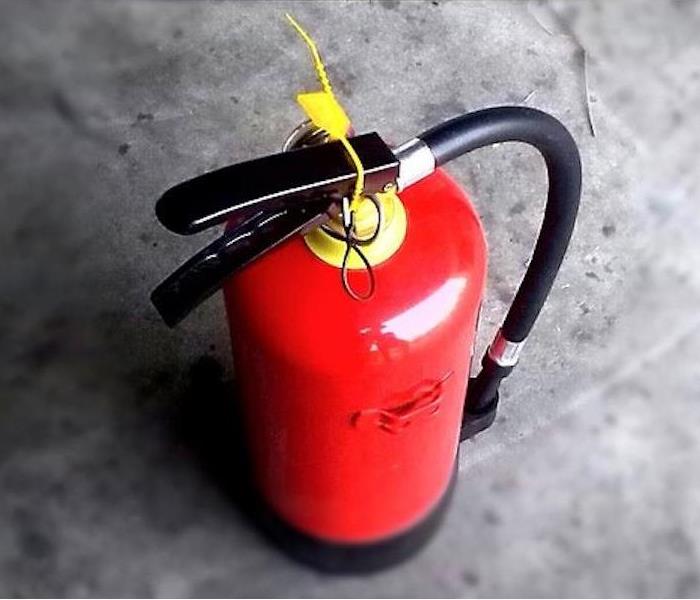 Learn about fire extinguishers!
Learn about fire extinguishers!
SERVPRO of Harlingen and San Benito wants to keep you safe and we know that little problems can become major issues in the future. When it comes to accidents in our home, or work space many don’t realize they are unprepared till it’s too late. So the more information to prepare you for an on site crisis the better! When it comes to fires many don’t really know how to use a fire extinguisher, or that there's actually four classes of extinguishers. A class is used to aid in putting out ordinary combustibles. Class B is used for flammable liquids (oil, grease, etc.). Class C is for electrically energized fires. Finally class D is suited for flammable metals. To remember how to work an extinguisher think of the P.A.S.S. method. Pull the pin, Aim low, Squeeze the hand;e, then Sweep the nozzle from side to side.
Fire Alarms
4/22/2020 (Permalink)
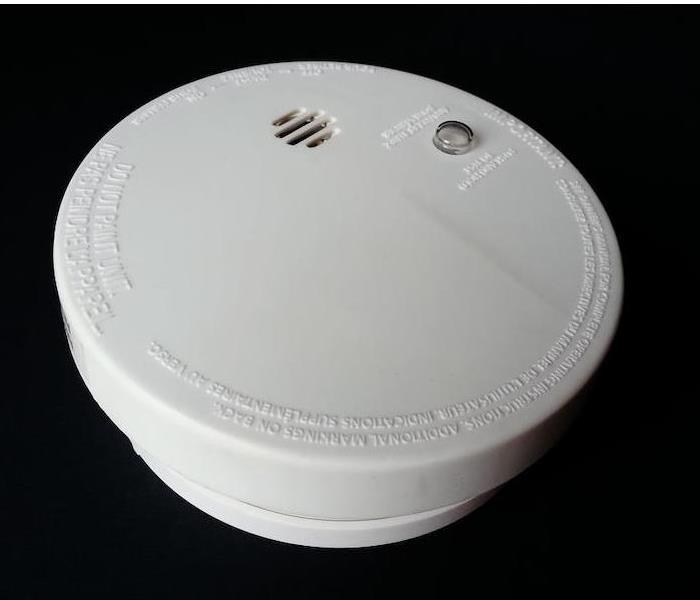 Learn about fire alarms!
Learn about fire alarms!
Fire Alarm systems are a key essential to our everyday safety. Just as you would charge your phone keeping up with the maintenance of your fire alarm is substantial for everyday safety. Fire Alarms work by detecting levels of heat and/or smoke, smoke particles pass through the optical detector and trigger the alarm. Fire alarms need to be checked monthly, and depending on the model should be replaced every ten years. The time you change your battery depends on the model and battery compatible. Smoke alarms generally use nine volt batteries and need to be replaced every six months. This information is important to keep in mind and discuss when purchasing fire alarms for your environment. Stay safe and remember to check your fire alarms.
Types of Smoke
3/17/2020 (Permalink)
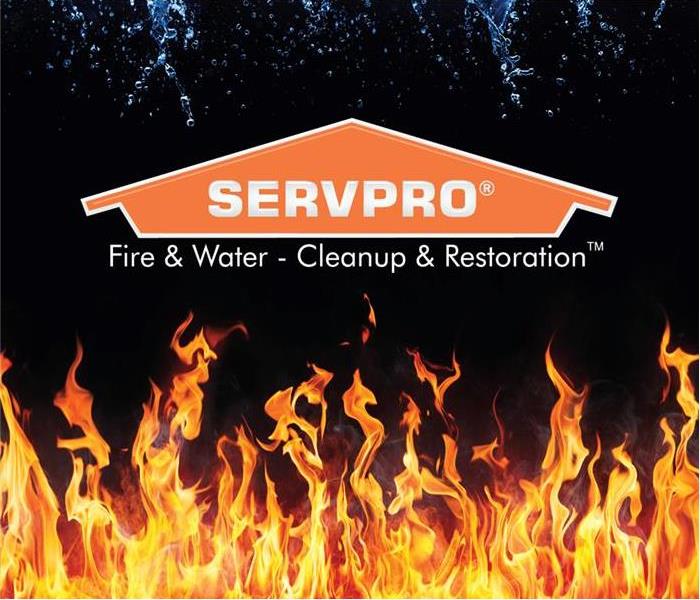 SERVPRO of Harlingen/San Benito is here to help!
SERVPRO of Harlingen/San Benito is here to help!
The following are types of smokes:
1. Wet Smoke. (Plastic and Rubber) Low heat, smoldering, pungent odor, sticky and smeary. Smoke webs are difficult to clean up
2. Dry smoke. (Paper and Wood) Fast burning, high temperatures: heat rises, therefore smoke rises.
3. Protein Fire Residue. (Produced by evaporation of material rather than from a fire) Virtually invisible, discolors paints and varnishes, extreme pungent odor.
4. Fuel Oil Soot. (Furnace Puff Backs) While "puffbacks" can create havoc for homeowners, SERVPRO of Harlingen/San Benito technicians can restore the contents and structure quickly.
5. Other Types. (Tear Gas, Fingerprint powder, and fire extinguisher residue) Special loss situations require special care.
SERVPRO Of Harlingen & San Bentio can make it " Like it never even happened."
Call us At (956)277-0645
DOs and DON'Ts of Fire Damage
3/10/2020 (Permalink)
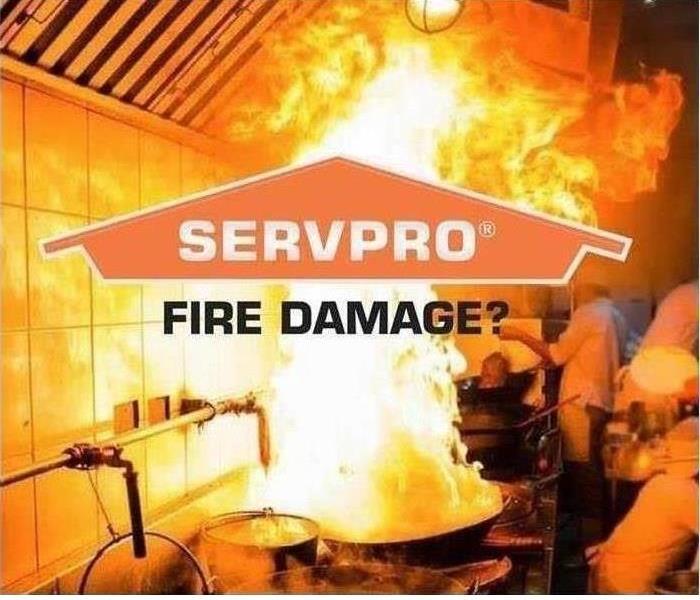 SERVPRO of Harlingen/ San Benito can help!
SERVPRO of Harlingen/ San Benito can help!
A fire can leave behind soot, smoke damage and a host of other problems. Ceilings, walls, wood work, carpeting and floors will often need a thorough professional cleaning. If your home or business suffers a fire, it is important to take the appropriate steps to prevent further damage until SERVPRO of Harlingen & San Benito arrive. The following tips may help reduce damage and increase chances of successful restoration.
Do:
1. limit movement in the home to prevent soot particles from being embedded into upholstery and carpet
2. keep hands clean, soot on hands can further soil upholstery walls and woodwork.
3. place dry, colorfast towels or old linens rugs upholstery and carpet traffic areas.
4. Change HVAC filters and leave system off unitl a trained professional can check the system
Don't :
1. Don't attempt to wash any walls or painted surfaces without first contacting SERVPRO of Harlingen/San Benito.
2. Don't attempt to shampoo carpet or upholstered furniture.
3. Do not consume any food or beverages that may have been stored closed to the fire, heat, or water, as they may be contaminate.
4. Don't send garments to the dry cleaner. Improper cleaning may set in smoke odor.
Smoke and Soot Cleanup
5/29/2018 (Permalink)
Smoke and soot is very invasive and can penetrate various cavities within your home, causing hidden damage and odor. Our smoke damage expertise and experience allows us to inspect and accurately assess the extent of the damage to develop a comprehensive plan of action.
Smoke and soot facts:
- Hot smoke migrates to cooler areas and upper levels of a structure.
- Smoke flows around plumbing systems, seeping through the holes used by pipes to go from floor to floor.
- The type of smoke may greatly affect the restoration process.
Different Types of Smoke
There are two different types of smoke–wet and dry. As a result, there are different types of soot residue after a fire. Before restoration begins, SERVPRO of Harlingen and San Benito will test the soot to determine which type of smoke damage occurred. The cleaning procedures will then be based on the information identified during pretesting. Here is some additional information:
Wet Smoke – Plastic and Rubber
- Low heat, smoldering, pungent odor, sticky, smeary. Smoke webs are more difficult to clean.
Dry Smoke – Paper and Wood
- Fast burning, high temperatures, heat rises, therefore, smoke rises.
Protein Fire Residue – Produced by evaporation of material rather than from a fire
- Virtually invisible, discolors paints and varnishes, extreme pungent odor.
Our Fire Damage Restoration Services
Since each smoke and fire damage situation is a little different, each one requires a unique solution tailored to the specific conditions. We have the equipment, expertise, and experience to restore your fire and smoke damage. We will also treat your family with empathy and respect and your property with care.
Have Questions about Fire, Smoke, or Soot Damage?
Call Us Today – 956-277-0645
Facing Fire Damage?
5/21/2018 (Permalink)
Here at SERVPRO Harlingen/San Benito, our technicians have a vast knowledge of what to do if your home or business is devastated by a fire. In fact, we are specialized in both fire and water damage restoration. Our excellent experience in cleaning and restoring facilities that have been faced with fire damage is unparalleled to any other company. We do everything from reviewing fire damage tips to caring for your belongings, carpet and upholstery cleaning, odor removal, and assessing commercial fire damage. We are available 24/7, a trusted leader in the restoration industry, and a preferred vendor for many national and local insurance companies. If you are facing fire damage, or just want to learn more about us here at SERVPRO Harlingen/San Benito, make sure to call us at (956) 277-0644, and like us on Facebook at https://www.facebook.com/SERVPROharlingensanbenito/.
What is that?
3/19/2018 (Permalink)
 Corner of a structure with smoke web.
Corner of a structure with smoke web.
The first time I walked in to a structure that had fire damage I was in complete shock. I never seen a house that had a fire incident that occurred in the structure. Seeing what a fire can do is an unforgettable experience I walked in to the structure and I saw what looked like black spiderwebs in all corners of the structure, to myself I thought man these people had a lot of spiders in their structure., but to my surprise those spider web looking things weren’t there because the structure was infested with spiders but it was due to the extreme heat that occurred in the structure. What happens in a structure is that the concentration of the soot is in a pattern and are circle like, well this happens when the intense heat is happening it magnetizes the screws and because of this the soot is attracted to it and it creates a darker circle around where the nail would be. As we go inside the structure we start to see the spider webs as I stated before these are not indeed spider webs these are called smoke webs and they occur when plastic has burnt because the smoke of plastic has a stronger charge than that of wood or cotton so with the already magnetized screw/nail they start to spin and collect in corners of ceiling and curtains. So, if there is a fire near you don’t forget to call SERVPRO of Harlingen and San Benito. (956)277-0645 we are open 24/7 even on holidays, we are there for you when you need it!
 Fire safety is a top priority for us at SERVPRO of Harlingen/San Benito this winter. Keep your home safe with these helpful tips!
Fire safety is a top priority for us at SERVPRO of Harlingen/San Benito this winter. Keep your home safe with these helpful tips!






 24/7 Emergency Service
24/7 Emergency Service

























